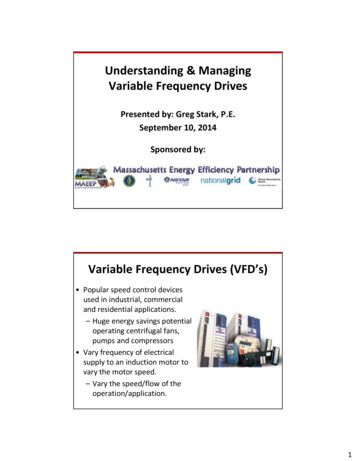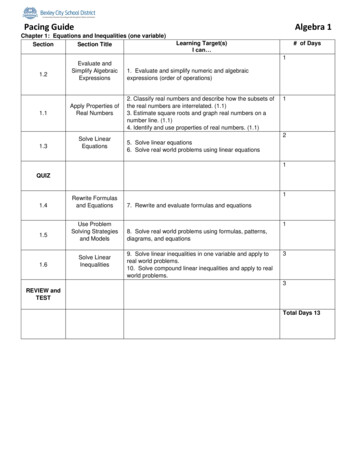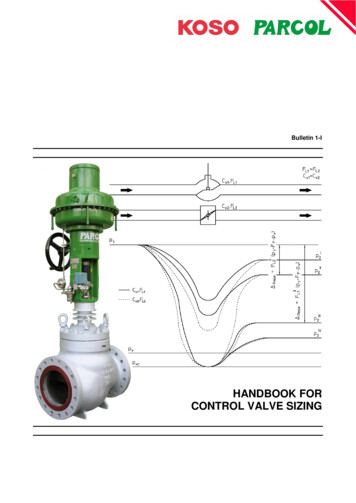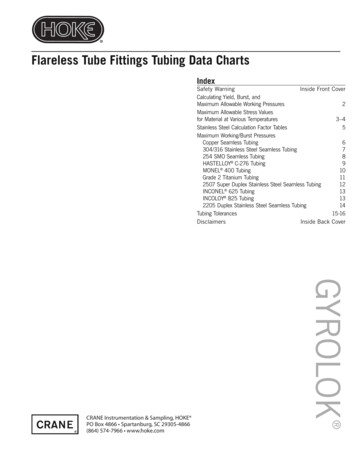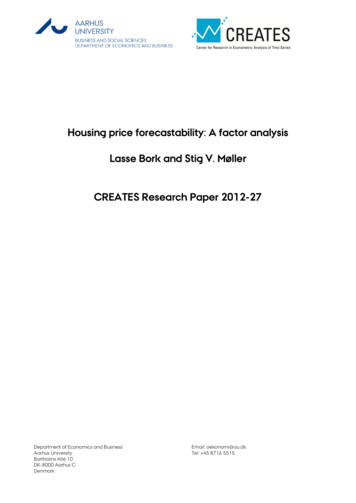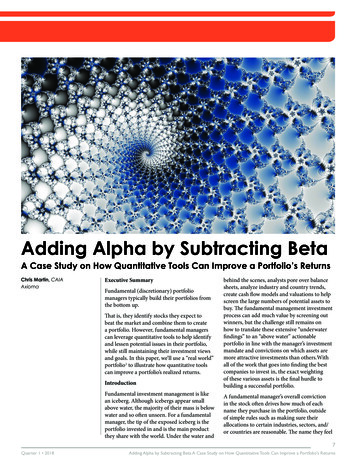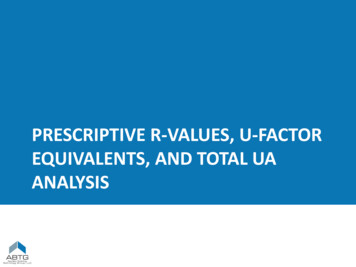
Transcription
PRESCRIPTIVE R-VALUES, U-FACTOREQUIVALENTS, AND TOTAL UAANALYSIS
US Climate ZonesUS Climate Zone Map (PNL/DOE interactive map)
Prescriptive Wall R-values – Homes2015IECC(same as2012 IECC)
Prescriptive Wall R-values –Commercial Buildings/Non-ResNote that the use of CIis featured in all climatezones for all buildingtypes.Again, equivalentalternatives are possiblethrough the U-factorapproach.Residentialapartment/condovalues may be slightlyhigher in some climatezones2015 IECC – same as 2012 IECC
U-factors for EquivalentAlternatives to R-valuesTable R402.1.4Above table for homes. U-factors for commercialbuildings will differ; See IECC-C and ASHRAE 90.1
Application of the U-factor Use this approach to:– Explore alternatives to the prescriptive wallinsulation (more CI and less cavity R-value, etc.)– Determine U-factor input to energy model orenergy rating programs Must use code-compliant insulation materialsMust substantiate U-factor for assemblyMust check moisture vapor control separatelyNOTE: U 1/Ract 1/Rnom
Comparing R20, R25, and R20 5ci wallsWall ComponentOutside winter airSidingContinuous insulationOSB - 7/16SPF studSPF headerCavity insulation1/2 drywallInside air filmR-value stud pathR-value header pathR-value cavity pathFraming factor - studsFraming factor -headerFraming factor - cavityU-factorEffective R of wallU-factor ComparisonR20R25R20 1%4%4%4%75%75%75%0.0600.0540.045171922The R20 5ci wall is 15% moreefficient than the R-25 wall.This is because the R-5cicreates a thermal break at thestud and header locations.According to the U-factorcompliance table, the R20 5ciwill work in any climate zonefor thermal performance.Moisture control performanceis addressed later as a separatecheck. The R-25 and R-20walls are suitable for climatezones 5 or less.
Continuous insulation is very important tothermal performance of steel framing2015 IECC Cavity insulation alone is a poor solution for steel framing. The addition of R-10 CI more than doubles this wall’s insulating powerWithout CI:With CI: R-19 CavityR-0 CIEffective: R-7R-19 CavityR-10 CIEffective: R-17
Total UA Envelope Trade-offs
U-factor and UA-AnalysisResources ABTG U-factor calculator– Specifically tailored to support U-factor analysis ofCI assemblies ResCheck– U-factor and UA analysis ComCheck– U-factor and UA analysis
Building Performance Path Use this approach to make full use of trade-offsor demonstrate whole-building compliance, butrequires approved energy modeling (software)and comparative analysis procedures.IECC 2012 R405.3
Energy Rating Index (ERI) PathNew in 2015 IECC The ERI is a score of 100(equivalent to the 2006 IECC) to 0(no net energy use). Same as HERs. The ERI values in the table areevaluated by DOE and others toensure equivalency to the othercompliance paths in the 2015code. Local amendments may attempt toraise these values to easecompliance and reduce insulationrequirements This would create a complianceadvantage for the ERI path that isnot equivalent to other paths.
Coordinate with Building Code VaporRetarder Requirements Regardless of a given assembly’s compliancewith the energy code, the 2015 IECC requiresit to be checked for compliance with vaporcontrol requirements in the building code. This check is important more later.
Not a fair trade: Long term benefit of CI vs.shorter term equipment efficiencies Some builders are using the performance or ERI paths to takeequipment efficiency trade-offs– This can come at the expense of CI and long term wall performance Unfortunately, some federal mandates contain outdatedminimum equipment efficiencies for trade-off purposes– Because it is an issue of federal law, this can’t be dealt with throughthe model or local code development process. This creates a loophole where wall CI can be traded off forunequal equipment efficiencies, reducing the overallperformance of the building
CI vs Thermal bridging: a game changerPoor thermal bridgesinclude:1. Uninsulated slabedges or balconyprojections2. Concrete wall/floorintersections with noexterior insulation3. Window/walltransitions (thru-wallmetal flashings, etc.)4. Furring and shelfangles penetratingcontinuous insulation.Poor (top left) to enhanced thermal bridging details(Source: Morrison Hershfield, SOLUTIONS, 2012, Issue 3)
CI vs Thermal bridging: a game changerThermal bridging can increaseheat flow up to 3x – but theenergy codes do not addressthese details.For additional information anddesign guidance refer to theBuilding Envelope ThermalAnalysis (BETA) Guide.Source: Cianfrone, Roppel, and Norris (2012)
New in 2015 IECC The ERI is a score of 100 (equivalent to the 2006 IECC) to 0 (no net energy use). Same as HERs. The ERI values in the table are evaluated by DOE and others to ensure equivalency to the other compliance paths in the 2015 code. Local amendments may attempt to raise these values to ease compliance and reduce insulation


